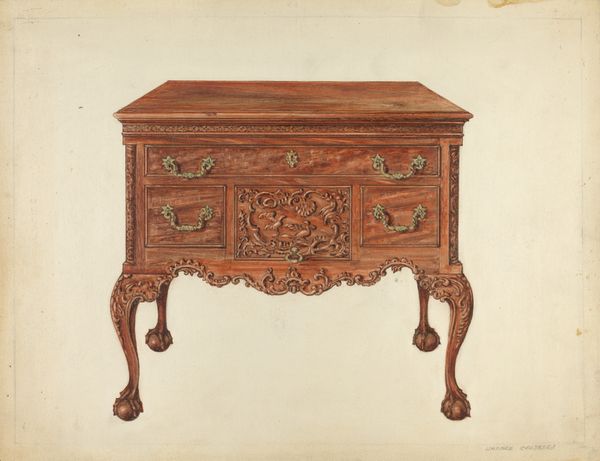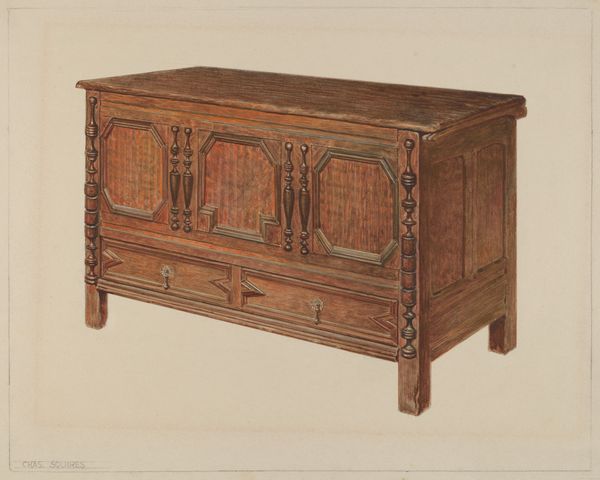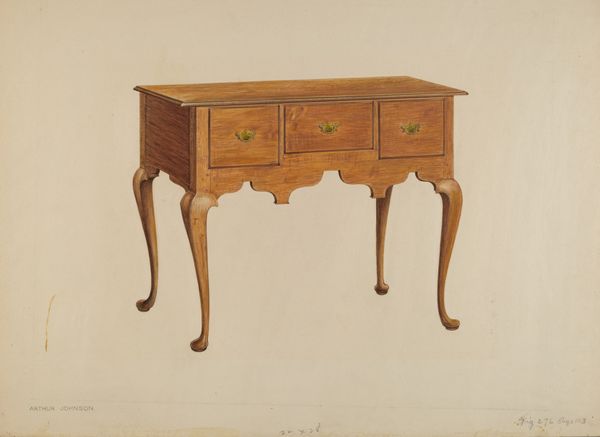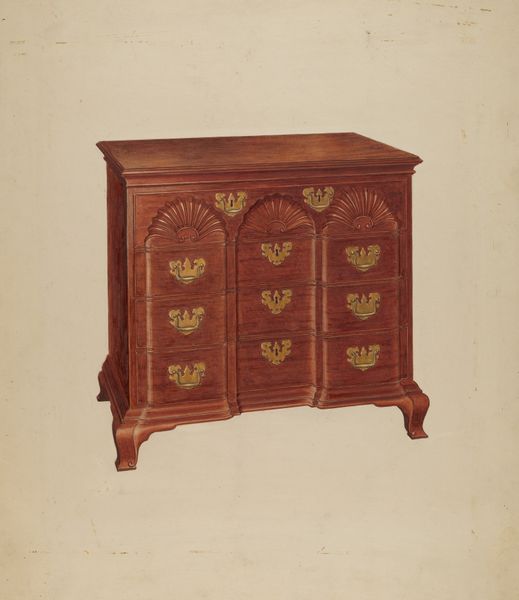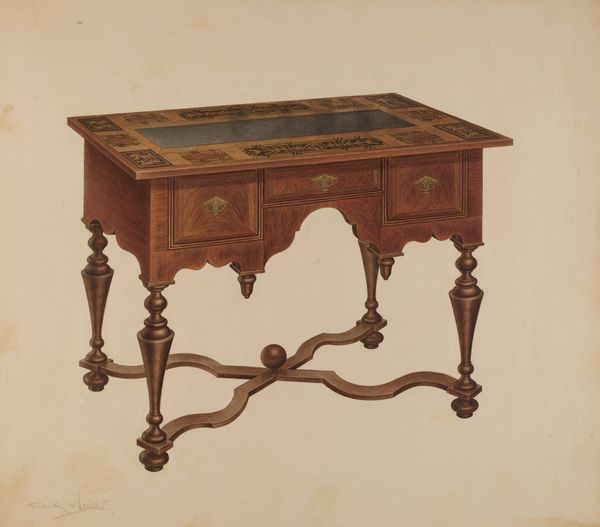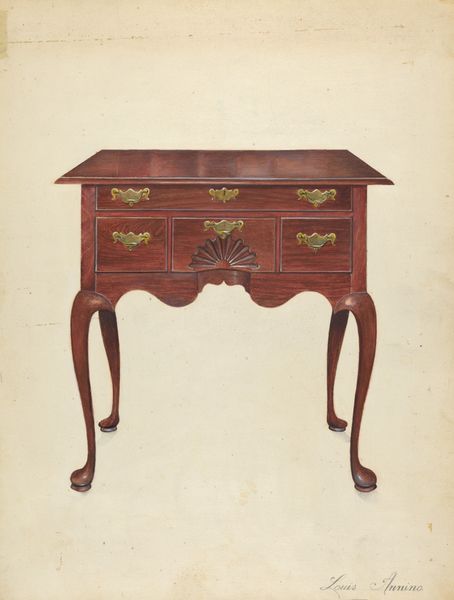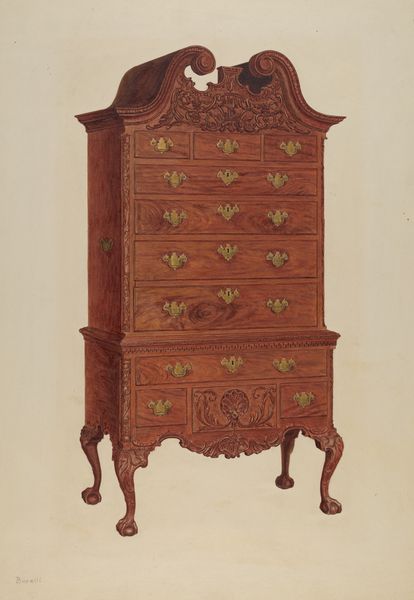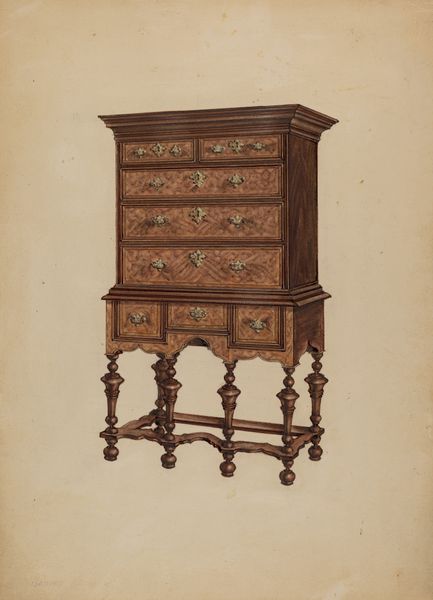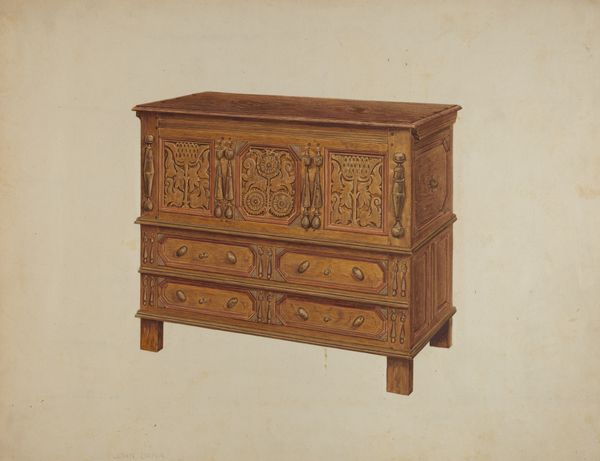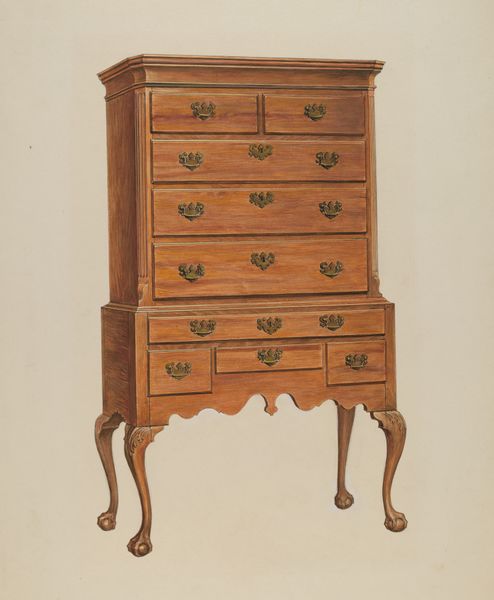
drawing, pencil
#
portrait
#
drawing
#
oil painting
#
pencil
#
academic-art
Dimensions: overall: 45.4 x 58.5 cm (17 7/8 x 23 1/16 in.) Original IAD Object: 31 3/4"high; 33 3/4"wide; 21"deep
Copyright: National Gallery of Art: CC0 1.0
Curator: Here we have "Lowboy," a pencil drawing created by Ferdinand Cartier in 1940. It showcases remarkable detail. What strikes you first about it? Editor: The elegance! The flowing lines, the way the legs curve – it's almost dance-like. And the precision is outstanding. I'm captivated by how Cartier captured the textures with just pencil and what I suspect are touches of oil. Curator: Precisely, this kind of furniture held significant social capital. It wasn't merely functional; it signified status and taste. Owning such pieces placed families within specific societal echelons. Editor: Absolutely. And if we consider the symmetry – the careful mirroring of elements around a central axis – it amplifies that sense of order and control. The shell motif adds complexity but remains subordinate to the overall geometric structure. Curator: And the shell motif itself would've signaled wealth, maritime power. I'd argue the inclusion isn't a simple aesthetic choice, but a statement about class, access to global trade, and the cultural narratives woven around domestic spaces. Editor: True. But technique is undeniably prominent too. Think of the challenges Cartier faced to portray this texture. To mimic that light reflecting from polished wood, using only gradations of shade...It requires masterful control. Curator: Of course, the craftsmanship within both the drawing and the piece itself shouldn't be overlooked. By replicating an emblem of wealth during this period, Cartier explores issues surrounding material culture and societal aspiration, providing insights into economic disparities of that time. Editor: An interesting juxtaposition indeed. This drawing encourages me to reflect more on material presence and history. Curator: I completely agree. This glimpse from Cartier prompts vital dialogues on history, aesthetics, and societal dynamics, offering multiple interpretive pathways to understanding furniture and culture.
Comments
No comments
Be the first to comment and join the conversation on the ultimate creative platform.

